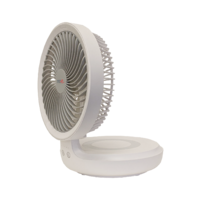Filter By Colour
- White
- Space Gray
-
Filter By Stock
- In Stock (4)
Filter By Brand
- GREE (3)
- NCE (1)
Caravan & RV Air Conditioners
Reliable air conditioners for caravans, built for Australian conditions. Our range includes rooftop and slimline units designed for RVs, motorhomes, and campervans. Whether you’re travelling off-grid or parked at a powered site, you’ll enjoy efficient heating and cooling year-round.
Caravan Air Conditioners: What You Should Know Before Buying
Choosing the right RV air conditioner is key to staying comfortable on the road. Whether you're driving through hot outback regions or heading into cooler climates, explore our range of caravan air conditioners designed for year-round comfort. Many units include reverse-cycle heating, so you can cool in summer and warm in winter with the same rooftop system.
How Caravan/RV Air Conditioners Differ from Household Units
- Built for vibration and motion during travel.
- Aerodynamic, weather-resistant housings to reduce wind/rain ingress while driving.
- Compact, space-efficient indoor components for small interiors.
- Power draw designed for RV electrical systems and portable generators.
Featured Option: Compact, Lightweight Rooftop Cooling
The GREE caravan air conditioner balances compact size with strong cooling performance. It suits a wide range of caravans and can be paired with a second unit in larger vans for zoned temperature control.
Types of Caravan & RV Air Conditioners
| Type | Best For | Advantages | Considerations |
|---|---|---|---|
| Roof-mounted | Most caravans and motorhomes | Saves interior space; efficient air circulation from the roof; commonly retrofit-friendly | Lightweight vans/pop-tops may need roof reinforcement (e.g., an H-frame) |
| Under-bunk / built-in | Pop-tops and campers where roof load is limited | Keeps roof clear; can be ducted to multiple outlets | Consumes storage space; airflow planning is important in larger vans |
| Split system | Vans lacking roof strength or needing remote compressor placement | Service access to indoor/outdoor units; flexible placement | Indoor module reduces storage; more components to mount and secure |
Sizing & Placement: Matching Unit to Van
Capacity choice depends on your van’s interior volume, insulation, glazing, and climate. As a simple guide:
| Van length (approx.) | General guidance | Notes |
|---|---|---|
| Up to ~5.5 m | Single rooftop unit is usually suitable | Prioritise efficient airflow to living area |
| ~5.5–7.5 m | Single rooftop unit with good airflow, or consider higher-output model | Heavier insulation/glazing improves results |
| ~7.5–9 m+ | Two units for zoned cooling (e.g., living + bedroom) | Useful for families or tropical touring |
Aim to place outlets where you relax and sleep. Use directional louvres to avoid drafts on beds and to push cool air down the aisle.
Inverter vs Non-Inverter: What It Means
- Reduced startup surge: less strain on electrical systems and generators.
- Higher efficiency: modulates output to maintain set temperature.
- Quieter operation: fewer abrupt on/off cycles.
- Potentially longer service life: lower mechanical stress.
Power & Off-Grid Planning
Rooftop air conditioners are 240 V devices. For off-grid cooling you’ll need a suitable inverter, battery bank, charging sources and realistic expectations about runtime. For a deeper walkthrough on matching air-con loads with batteries, solar and DC-DC charging, see our Off-Grid Caravan Power Guide.
- Inverter: choose adequate continuous power with headroom for compressor ramp-up.
- Batteries: lithium chemistry offers high usable capacity and faster recharge.
- Charging: combine solar, DC-DC from alternator, and mains when available.
- Generator: inverter-style generators provide quiet, clean power for campsites.
Installation Considerations
- Roof aperture and thickness: confirm the cut-out dimensions and roof sandwich depth recommended by the manufacturer.
- Structure: assess need for reinforcement plates/H-frames in lightweight roofs.
- Sealing & drainage: follow torque specs, use appropriate sealants, and confirm water shedding paths.
- Electrical: use licensed installers for 240 V connections and compliance.
Noise, Airflow & Comfort
- Noise: inverter units and well-designed diffusers help at night. Keep filters clean.
- Airflow: direct cool air toward occupied zones; avoid blowing straight onto pillows.
- Humidity: dry mode or dehumidification reduces clamminess in coastal climates.
- Heating: reverse-cycle heating can replace plug-in heaters in many conditions.
Maintenance & Care
- Clean or replace return-air filters regularly.
- Inspect gaskets, mounting bolts, and cable glands after corrugated-road travel.
- Keep roof clear of debris; ensure drain paths are unobstructed.
- Operate monthly in the off-season to circulate oil and keep seals conditioned.
Quick Buying Checklist
- Van length, insulation and glazing considered.
- Electrical system capacity verified (mains, inverter, batteries, generator).
- Preferred features selected (inverter, reverse cycle, soft start, Wi-Fi controls).
- Install path confirmed (roof strength, aperture, ducting, pro installation).
- After-sales support and parts availability checked.
Ready to compare options? Browse our current range of caravan air conditioners or see the GREE rooftop model for a compact, high-performance choice. For broader selection tips, visit our Caravan Air Conditioner Buying Guide.

![GREE Roof Top Air Conditioner 2.5KW with Inverter [Colour: White]](/assets/thumb/GRH09DB-K6DNA1A-WH.webp?20250331094437)



